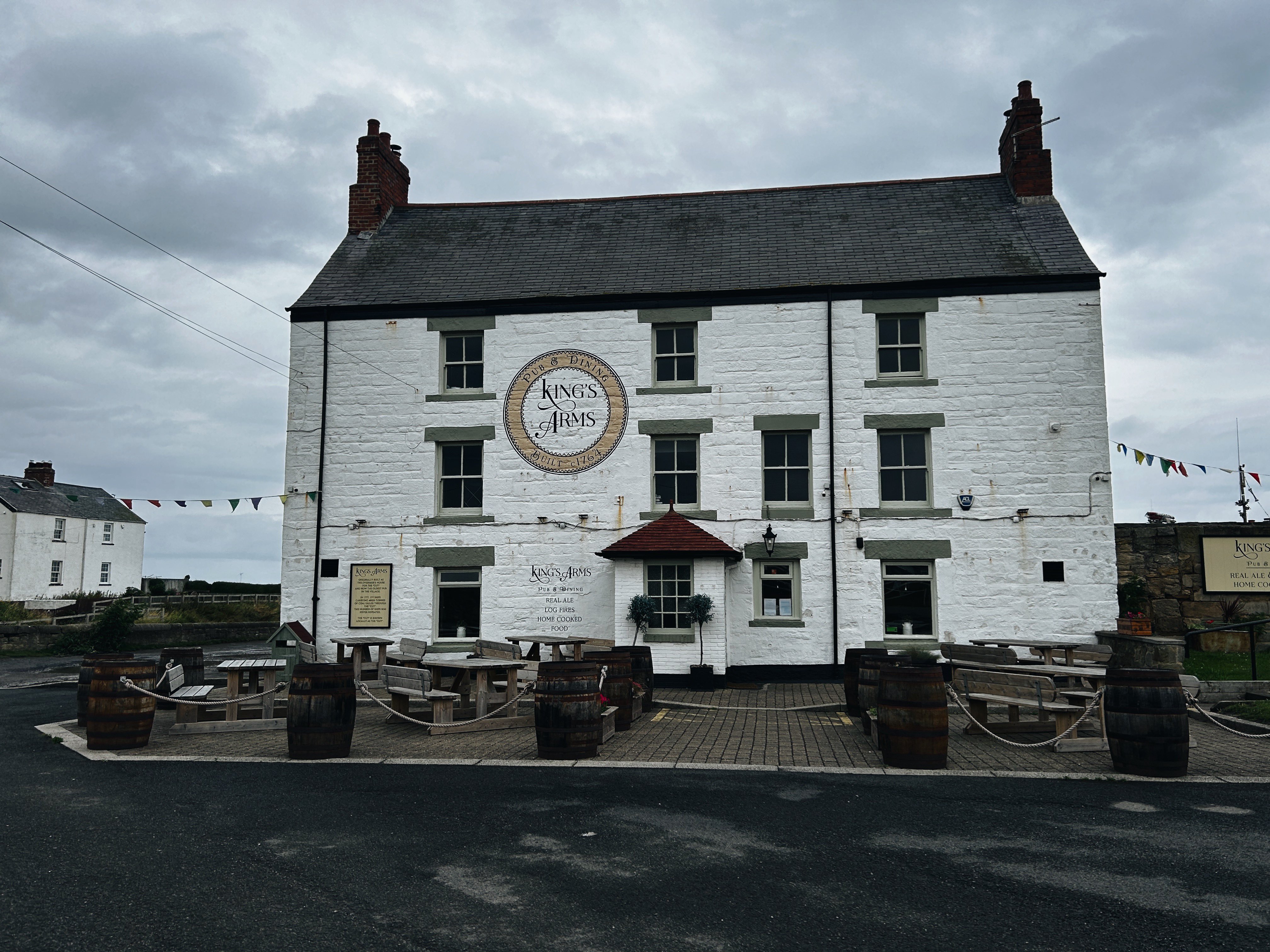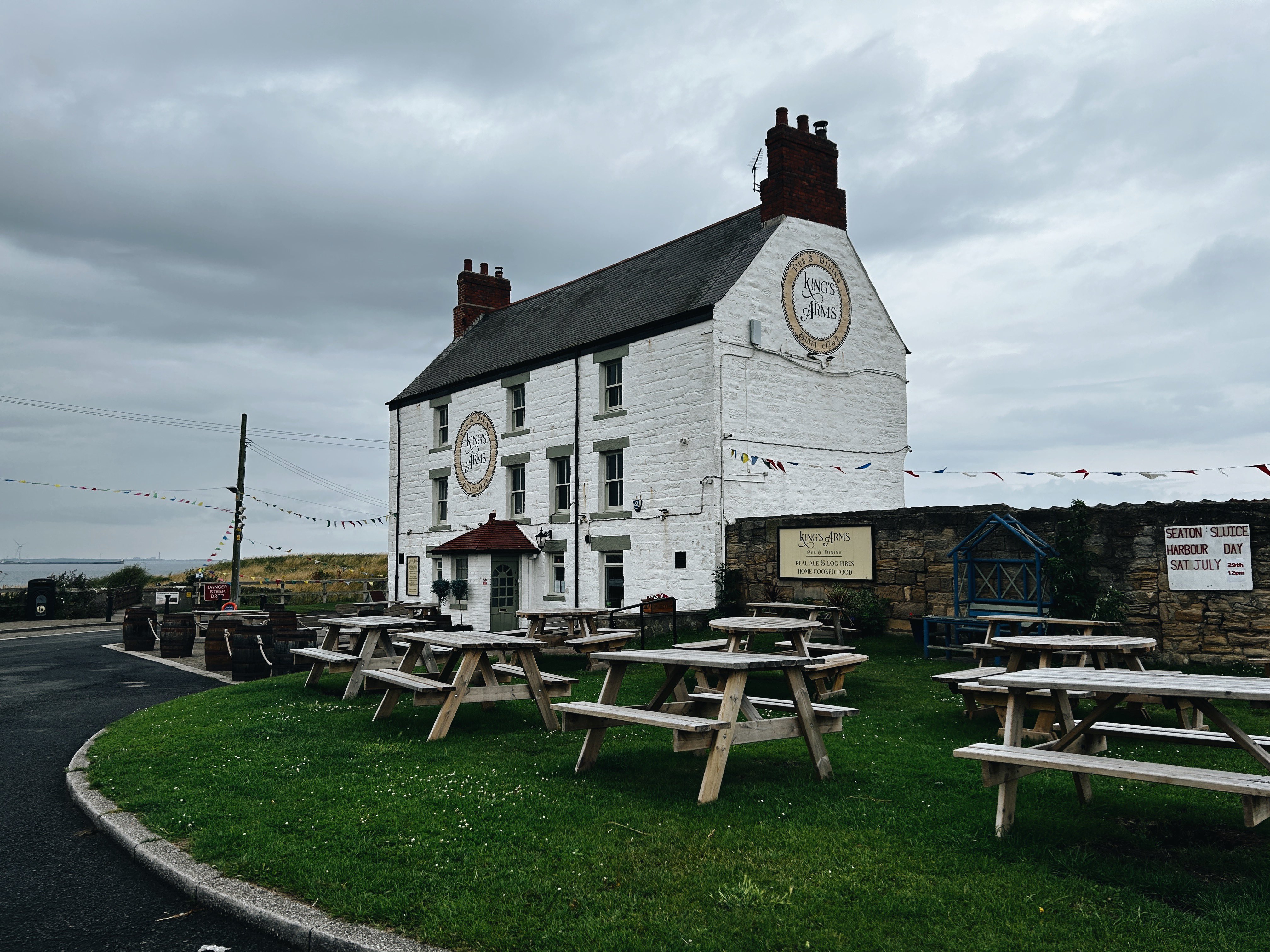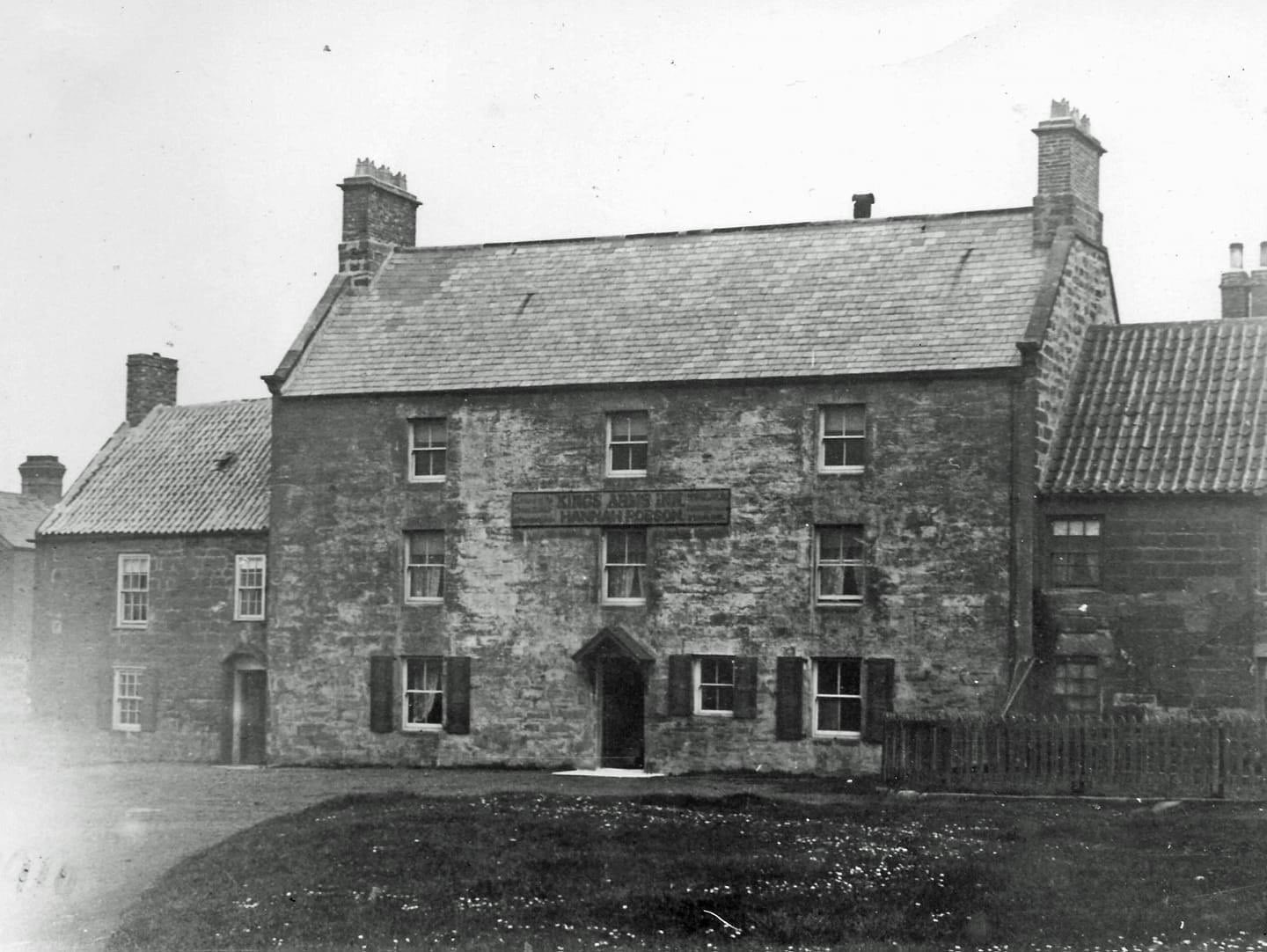
Seaton Sluice, Northumberland
The Kings Arms
Last Updated:
18 Aug 2023
Seaton Sluice, Northumberland
This is a
Pub
55.084146, -1.471879
Founded in
Current status is
Extant
Designer (if known):

Listed Grade II
The mighty Kings Arms at Seaton Sluice still stands as one of the historical centrepieces of the village.
The building has stood here since the early to mid 18th century, and not long after became a coach house (which is still in situ) and hotel. Before becoming a pub though, it was the harbour overseer's house.
As the focal point of the village, much of the local politics and meetings occurred in the inn. For example, the friends of the New Connexion Chapel at New Hartley held a "garage" sale at the inn with the objective of liquidating their debt and raised £50. In 1866, entries were taking in at the Kings Arms for the New Years pig shoot, with Mr Smart of the inn charging 2s 6d to shoot as many pigs as possible from 40 yards away.
Like many Victorian pubs, it was also the scene of many inquests before widespread mortuaries. In 1889, an inquest was held here for the death of Captain Carr after being recovered from St Mary's Island down the road. Eventually, a mortuary was constructed just behind the Kings Arms.
There used to be dwellings on either side, as seen on the shot from the 1900s courtesy of the Jack & Geoff Phillips Collection under the care of Steve Ellwood (@TyneSnapper). Though isolated on the row now, it was once the central building of a full row of dwellings, with outbuildings and a number of houses behind the property. Around the same time, the listed coach-house next door became the HM Coastguard Station.
Both sides have since been demolished, and now stands solitary in this historic area of the region.
Listing Description (if available)


Both plans above illustrate the Kings Arms from the 1820s to the 1860s. Apologies for the low resolution of the first map (via Billy Embleton), but it demonstrates the vast change in the village through the century. The Kings Arms can be seen when it was likely the Overseer's House, with gardens and a small estate. At the front of the property, the old Seaton Sluice waggonway can be seen which came from the Hartley Pits owned by the Delavals. Coal was shipped from the harbour, with vessels led down the Cut by a pilot.
Various other industries can be seen on this plan, including a quarry, copperas works and saw pit.
The second map retains a more familiar look. The building had been converted into a public house by this time, though the waggonway is still extant. Industry in the village had expanded even further, with an iron works, the famous glass & bottle works as well as the mill in the south west of the village.

The waggonway had been demolished a couple decades prior to the 1897 map, though some features are retained including the glass works and the windlass to the north east of the pub. Rocky Island was still substantially developed. Most of the pits around Seaton Sluice had closed by this time.

The Kings Arms in 2023

A second perspective of the Kings Arms, with a stone wall constructed after the demolition of the dwellings. Perhaps stone was recycled from the house?

The Kings Arms in the 1900s under the ownership of Hannah Robson, who was landlady until 1911.
